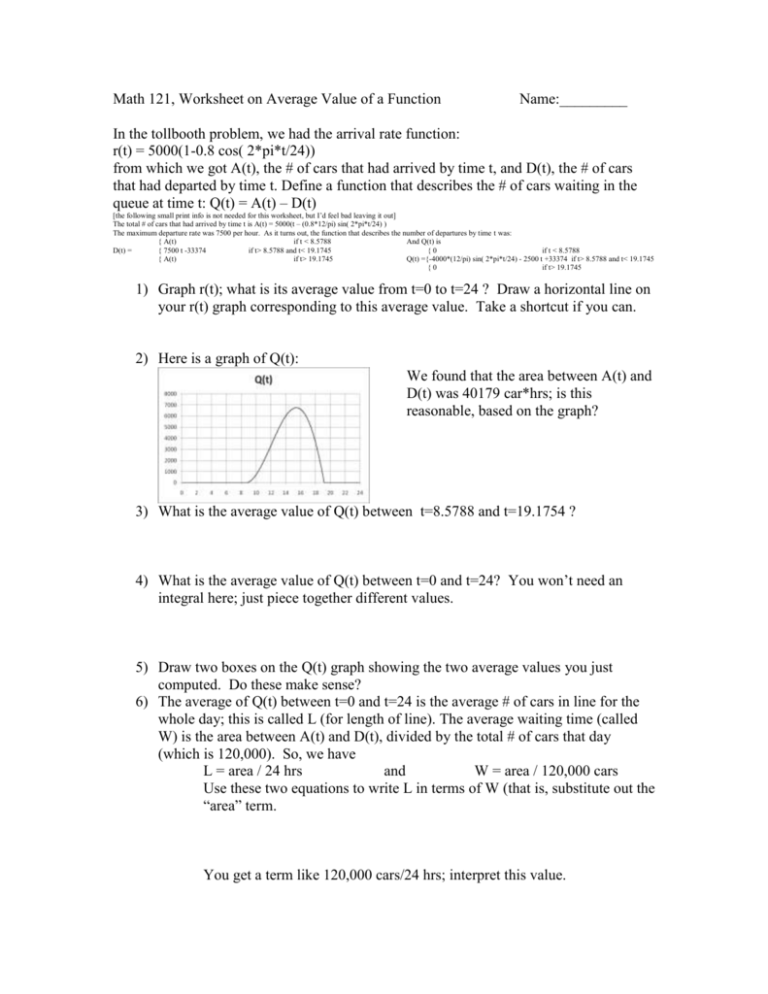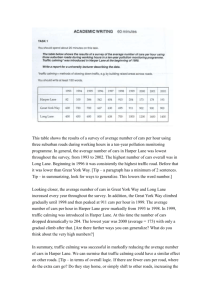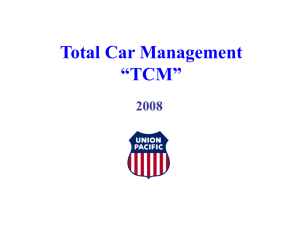Math 121, Worksheet on Average Value of a Function
advertisement

Math 121, Worksheet on Average Value of a Function
Name:_________
In the tollbooth problem, we had the arrival rate function:
r(t) = 5000(1-0.8 cos( 2*pi*t/24))
from which we got A(t), the # of cars that had arrived by time t, and D(t), the # of cars
that had departed by time t. Define a function that describes the # of cars waiting in the
queue at time t: Q(t) = A(t) – D(t)
[the following small print info is not needed for this worksheet, but I’d feel bad leaving it out]
The total # of cars that had arrived by time t is A(t) = 5000(t – (0.8*12/pi) sin( 2*pi*t/24) )
The maximum departure rate was 7500 per hour. As it turns out, the function that describes the number of departures by time t was:
{ A(t)
if t < 8.5788
And Q(t) is
D(t) =
{ 7500 t -33374
if t> 8.5788 and t< 19.1745
{0
if t < 8.5788
{ A(t)
if t> 19.1745
Q(t) ={-4000*(12/pi) sin( 2*pi*t/24) - 2500 t +33374 if t> 8.5788 and t< 19.1745
{0
if t> 19.1745
1) Graph r(t); what is its average value from t=0 to t=24 ? Draw a horizontal line on
your r(t) graph corresponding to this average value. Take a shortcut if you can.
2) Here is a graph of Q(t):
We found that the area between A(t) and
D(t) was 40179 car*hrs; is this
reasonable, based on the graph?
3) What is the average value of Q(t) between t=8.5788 and t=19.1754 ?
4) What is the average value of Q(t) between t=0 and t=24? You won’t need an
integral here; just piece together different values.
5) Draw two boxes on the Q(t) graph showing the two average values you just
computed. Do these make sense?
6) The average of Q(t) between t=0 and t=24 is the average # of cars in line for the
whole day; this is called L (for length of line). The average waiting time (called
W) is the area between A(t) and D(t), divided by the total # of cars that day
(which is 120,000). So, we have
L = area / 24 hrs
and
W = area / 120,000 cars
Use these two equations to write L in terms of W (that is, substitute out the
“area” term.
You get a term like 120,000 cars/24 hrs; interpret this value.
Math 121, Worksheet on Average Value of a Function
Name:_________
Suppose you work on a family farm that grows olive trees. The
productivity of a tree changes with its age as follows:
Age (years)
bushels/year
0
0
10
8
20
16
30
20
40
24
50
26
60
25
70
20
80
18
You have fit the function b(t) = t*(100-t)/100 bushels/year to these data.
a) What is the average productivity of a tree that lives to age “T”?
b) What is the optimal age at which to chop down a tree and plant a new
one?









